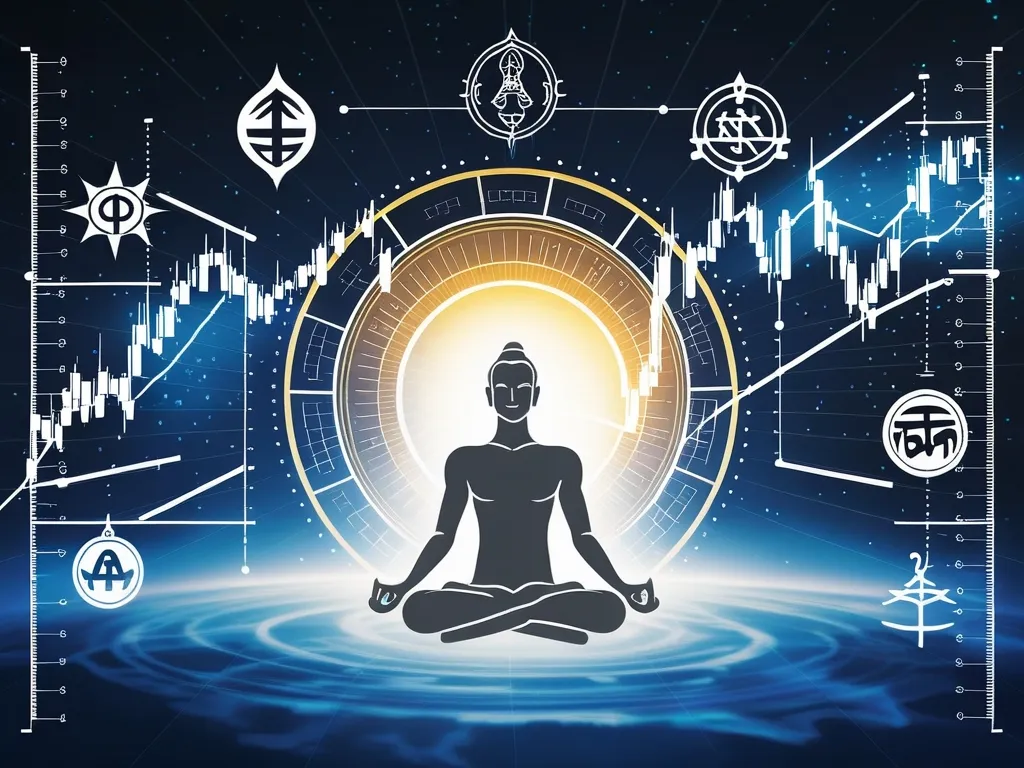5 Profound Wisdom Teachings from Mystical Traditions
Throughout history, mystics across various traditions have sought direct experience of the divine or ultimate reality. Their teachings offer profound insights that transcend cultural and religious boundaries. These wisdom traditions share remarkable similarities despite emerging from different times and places.
The mystic path invites us to move beyond intellectual understanding to lived experience. As we explore these five profound wisdom teachings, consider how they might apply to your own spiritual journey, regardless of your background or beliefs.
I have often found that mystical traditions speak to something universal in human experience. They point to a reality that exists beyond our ordinary perception, yet remains intimately connected to our daily lives.
Surrender represents one of the most challenging yet transformative aspects of spiritual practice. This concept appears across mystical paths, though expressed through different cultural frameworks. In essence, surrender involves releasing our need for control and aligning with something greater than ourselves.
Sri Aurobindo described surrender as the “one thing needful,” emphasizing its essential role in spiritual growth. The process begins with recognizing the divine presence within oneself and cultivating the aspiration to unite with it. This initial stage often involves a mental decision to place oneself under divine guidance[2].
As we progress, surrender extends to our emotional life, requiring us to overcome desires, attachments, and egoistic tendencies. The final and most challenging stage involves the physical being, transforming deeply ingrained habits into expressions of devotion[2].
What aspects of your life feel most difficult to surrender? What might happen if you released your tight grip on controlling outcomes?
“True surrender is not about giving up. It is about opening up to the infinite possibilities beyond our limited vision.”
In Sufism, surrender manifests as complete submission to divine will. Christian mystics speak of “dying to self” to find union with God. Buddhist practitioners release attachment to ego through meditation. Each tradition recognizes that spiritual growth begins with letting go.
The practice of silence cuts across religious boundaries as a powerful path to wisdom. In our noise-filled world, the invitation to stillness often feels radical. Yet mystics consistently point to silence as essential for spiritual awakening.
Desert Fathers in early Christianity sought isolation in the wilderness to hear divine whispers. Quaker meetings center on shared silence, creating space for inner guidance to emerge. Zen practitioners sit in zazen to access direct experience beyond conceptual thought.
Have you ever experienced profound silence? What arose in that space beyond words?
The common thread across these practices is the recognition that quieting the mind opens awareness to deeper realities. When we cease our constant internal chatter, something else can speak to us—whether we call it God, the Absolute, or our true nature.
“In silence, the soul finds the path in a clearer light, and what was hidden becomes revealed.”
Paradox appears as a central element in most mystical teachings. Rather than seeing contradictions as problems to solve, mystics embrace paradox as pointing to truths beyond logical understanding.
The Tao Te Ching states “the way that can be spoken is not the eternal Way,” highlighting how ultimate reality defies our attempts to capture it in language. Christian mystic Meister Eckhart described God as “beyond all names,” recognizing that divine reality transcends our conceptual categories.
Zen Buddhism embraces paradox most explicitly through koans—puzzling statements or questions designed to short-circuit ordinary thinking. Consider the famous koan: “What is the sound of one hand clapping?” Such questions intentionally defy logical analysis, pushing practitioners toward direct insight.
These traditions acknowledge that ultimate reality transcends ordinary mental categories. As one explores mysticism more deeply, paradoxes multiply rather than resolve. The divine is both personal and impersonal, immanent and transcendent, everywhere and nowhere.
What paradoxes have you encountered in your own experience? How might embracing rather than resolving them lead to deeper wisdom?
Taoist mysticism emphasizes surrendering to the mystery of existence with humility and grace, rather than demanding doctrinal precision[4]. This approach recognizes that the universe operates according to principles that often defy our attempts at categorization.
Service to others emerges as essential spiritual practice across mystical traditions. While mysticism is often portrayed as focused on individual enlightenment or union with God, authentic mystical experiences typically lead practitioners back into engaged relationship with humanity and all creation.
Hindu karma yoga teaches liberation through selfless action. Jewish mysticism emphasizes tikkun olam (repairing the world). Buddhist bodhisattvas delay personal enlightenment to help all beings achieve freedom from suffering.
This common thread suggests spiritual maturity manifests through compassionate engagement. As we progress on the spiritual path, our boundaries between “self” and “other” become more permeable, leading naturally to service.
How might your spiritual practices lead to greater service? Where do you feel called to offer your gifts to others?
“We are all just walking each other home.”
The paradoxical understanding that divine reality exists both within and beyond the world represents another profound mystical teaching. Rather than seeing God or ultimate reality as entirely separate from creation, mystics often experience a both/and perspective that transforms ordinary perception.
Sufis proclaim “wherever you turn, there is the face of God,” pointing to divine presence permeating all existence. Hindu Upanishads teach “Thou art That,” indicating the surprising identity between individual consciousness and universal being. Christian contemplatives speak of God as both transcendent and immanent—completely beyond yet intimately present within creation.
Mysticism refers to the belief that one can know spiritual truths beyond intellectual understanding by being absorbed into the Divine[3]. This experience of absorption or union challenges conventional boundaries between sacred and ordinary realms. The mystic increasingly perceives all of life as sacred, seeing the extraordinary within the ordinary.
Do you recognize moments when the divine seems to shine through ordinary reality? What practices help you maintain this perspective?
The mystical traditions across world religions offer remarkably similar maps of spiritual development, despite their different cultural expressions. They invite us to move beyond surface-level religious differences to explore the common human experience of transcendence.
These five wisdom teachings—surrender, silence, paradox, service, and divine immanence/transcendence—provide entry points into mystical understanding. They remind us that spiritual truth is not primarily intellectual but experiential, not about accumulating knowledge but transforming perception.
As you reflect on these teachings, consider which ones resonate most deeply with your own experience. The mystical path is not about adopting someone else’s answers but awakening to your own direct knowing.
“The spiritual journey is not about acquiring something outside yourself. Rather, it’s about shedding the layers that prevent you from recognizing what you already are.”
Perhaps the greatest wisdom from mystical traditions is the recognition that what we seek is not distant or separate from us. The divine reality—by whatever name—is our true nature, hidden in plain sight. The spiritual journey becomes less about reaching some far-off destination and more about awakening to what has been present all along.
What if what you’re seeking is seeking you? What if the treasure you long for is buried in the field of your own being, waiting to be discovered?
Mysticism across traditions points to this profound truth: we are already what we seek. The journey is one of remembering rather than becoming. And in that remembering, we find ourselves naturally drawn to surrender, silence, paradox, service, and the recognition of divine presence permeating all reality.






